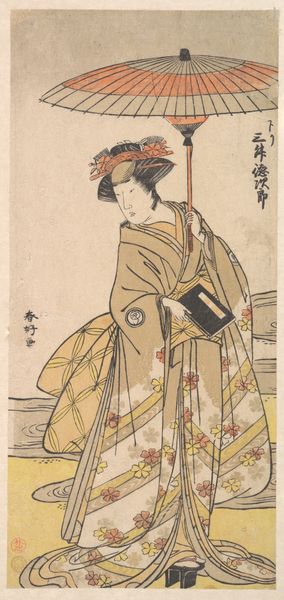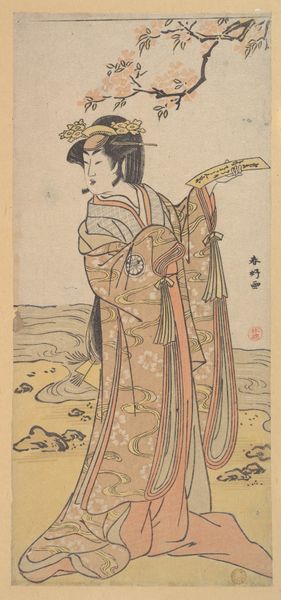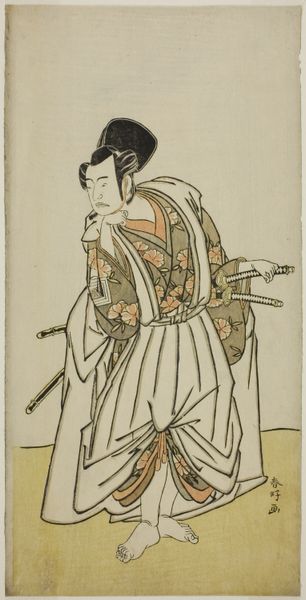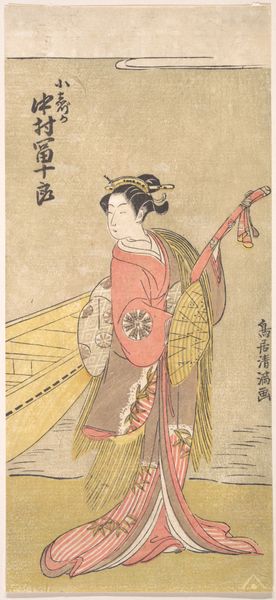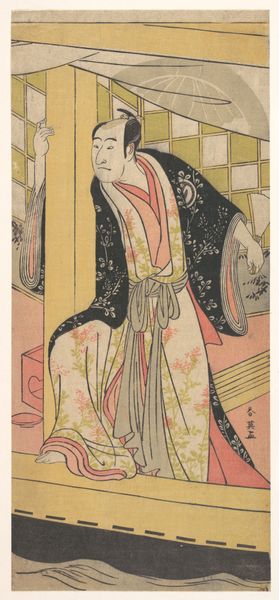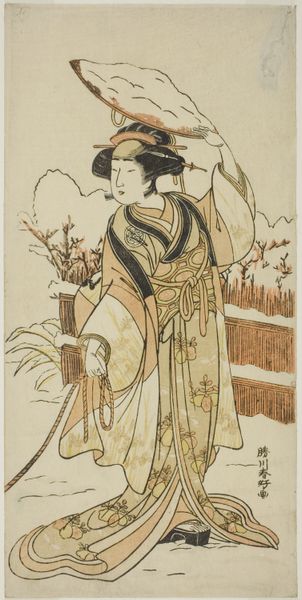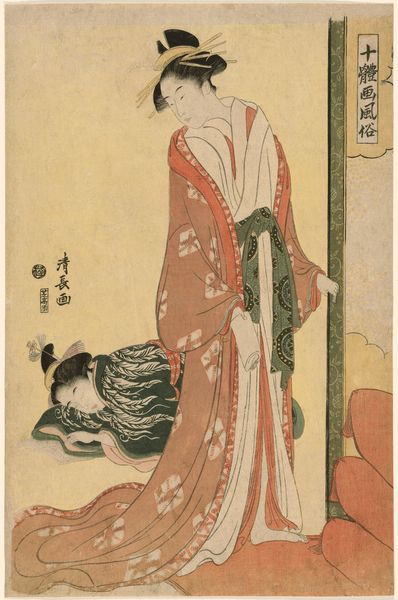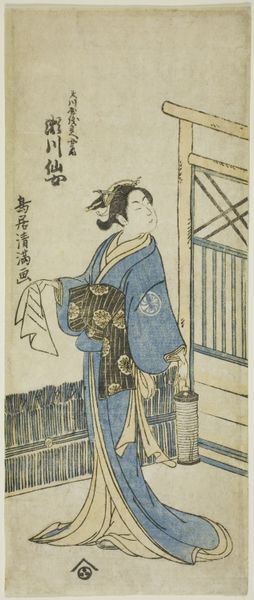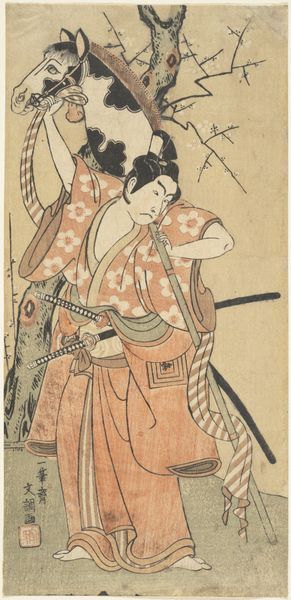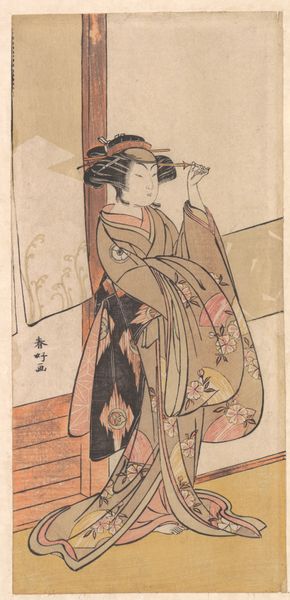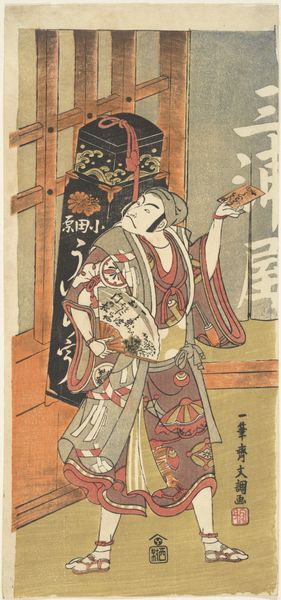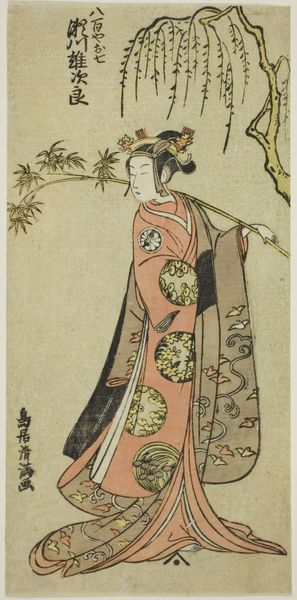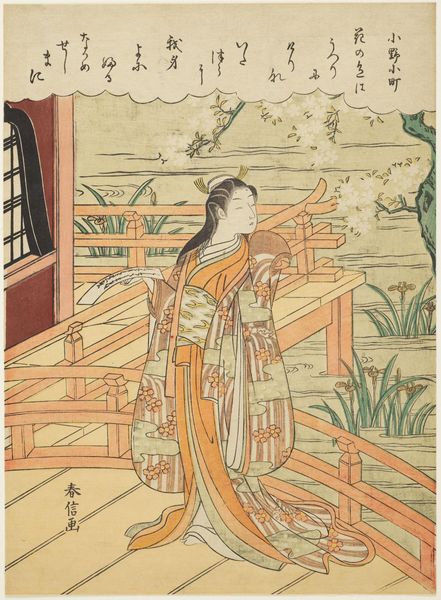
print, woodblock-print
#
portrait
# print
#
asian-art
#
caricature
#
kitsch
#
ukiyo-e
#
japan
#
woodblock-print
#
watercolour illustration
Dimensions: 11 1/8 × 8 1/4 in.
Copyright: Public Domain
Curator: Here we have Suzuki Harunobu's woodblock print, "The Kagura Dancer," dating from about 1766, and it resides here at The Art Institute of Chicago. What are your immediate impressions of it? Editor: It’s beautiful, quite dreamlike. The delicate coloring, the serene expression on the dancer’s face… it has this otherworldly quality, as though we’re glimpsing a private ritual. I notice the figure is offset slightly, as though on display to a select few. Curator: The subject of a Kagura dancer offers insight into Japanese cultural history of the time. Kagura is a type of Shinto theatrical dance, often performed at shrines. Harunobu situates it in an interesting space – it is a depiction of carefully ritualized entertainment. This connects the piece with ukiyo-e traditions and its context in early Japanese capitalism. Editor: So, it's not just art for art's sake; there's this embedded layer of social commentary and consumer culture reflected here, where even religious traditions become a spectacle of sorts? Considering it's a woodblock print, part of a medium accessible to a wider audience, that adds another dimension to the narrative. I'm thinking about how ideas about tradition and womanhood are being packaged here, perhaps commodified in ways we can read critically today. Curator: Absolutely. Consider that Harunobu’s work often focuses on the intimate details of daily life and the emerging merchant class, this is what helps define the aesthetic movement, and social dynamic. In "The Kagura Dancer" that comes across, the print creates this subtle narrative, engaging viewers with notions of the feminine ideal and expectations that would likely shape discussions for years. Editor: Thinking about the way the dancer is posed – she holds ritual objects, but there's a stillness to her, almost a passivity. Is she an active participant in this ritual, or is she embodying an ideal performance of womanhood according to that specific cultural and temporal framework? Does her individual agency matter within that construct? These types of popular entertainment could influence a larger audience perspective on cultural tradition. Curator: It is this push and pull in art historical representations that I find enduring in the print medium; popular culture provides a new opportunity to both form and reflect public expectations and the place for women in Japan. The setting, on a slightly raked wooden deck with neutral toned risers, allows us to wonder what else is out there…what are your lasting thoughts on the work? Editor: It strikes me how a seemingly simple image opens up avenues to discussing performance, cultural commodification, and the representation of women. Looking closer and reflecting on these visual works provides critical discussions we can learn from today.
Comments
No comments
Be the first to comment and join the conversation on the ultimate creative platform.
